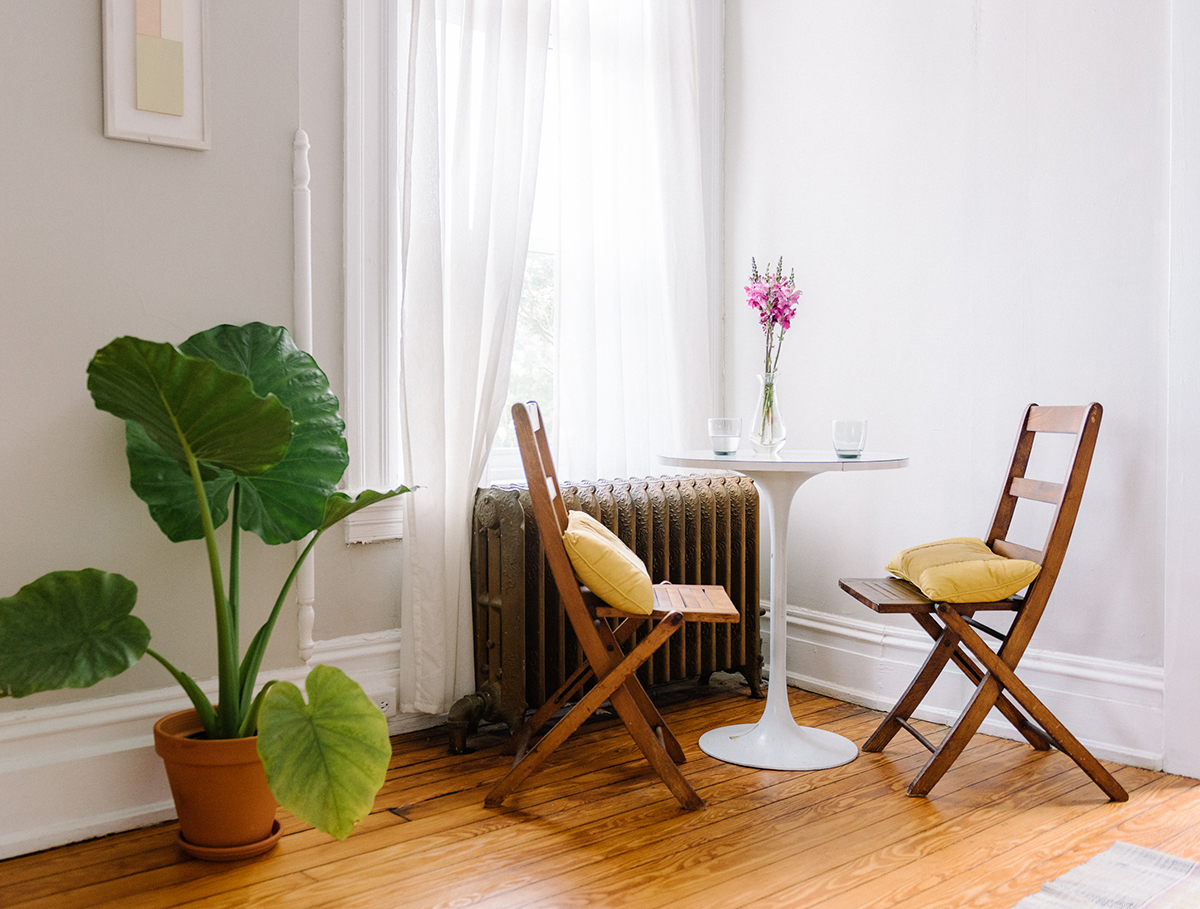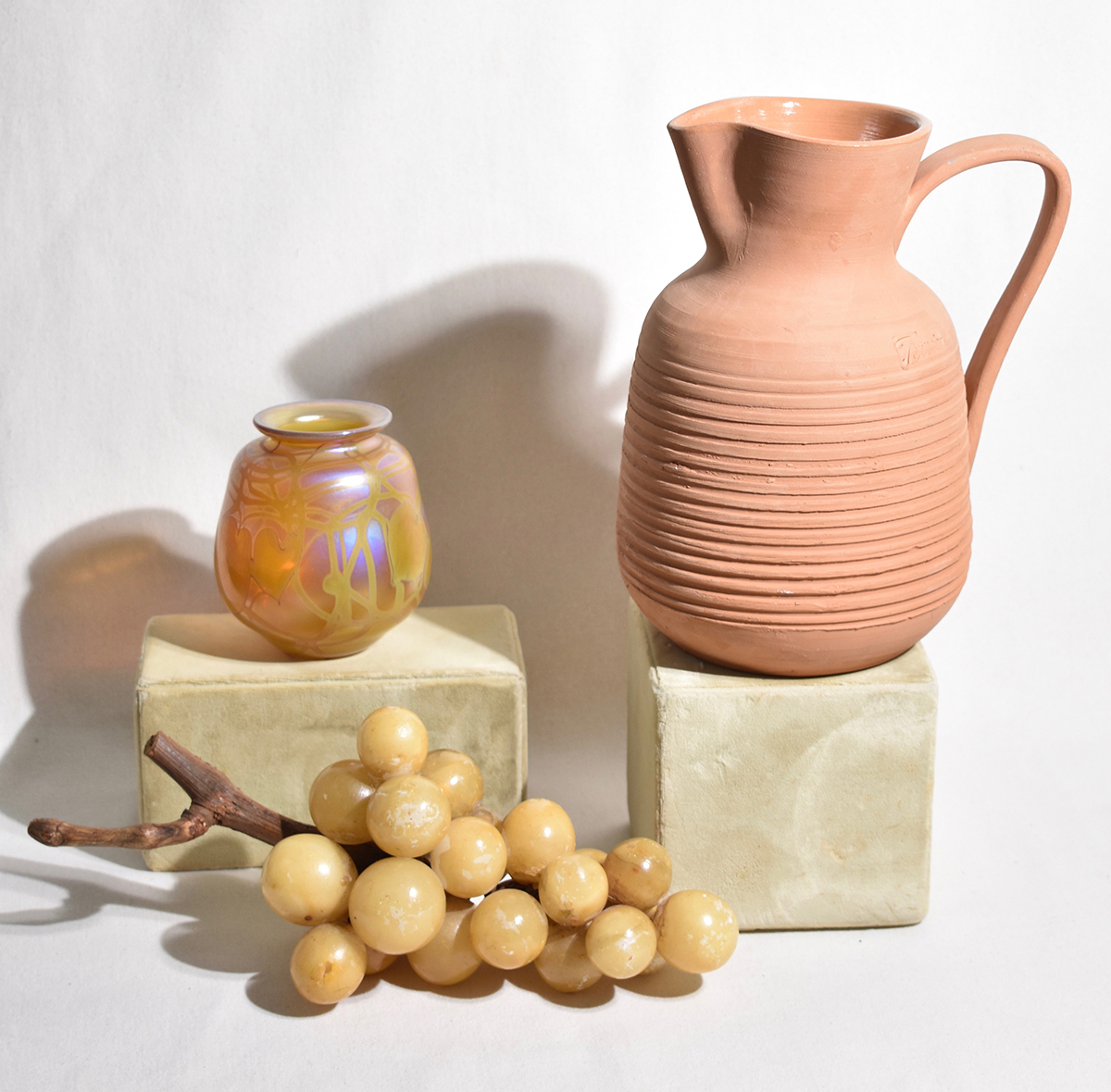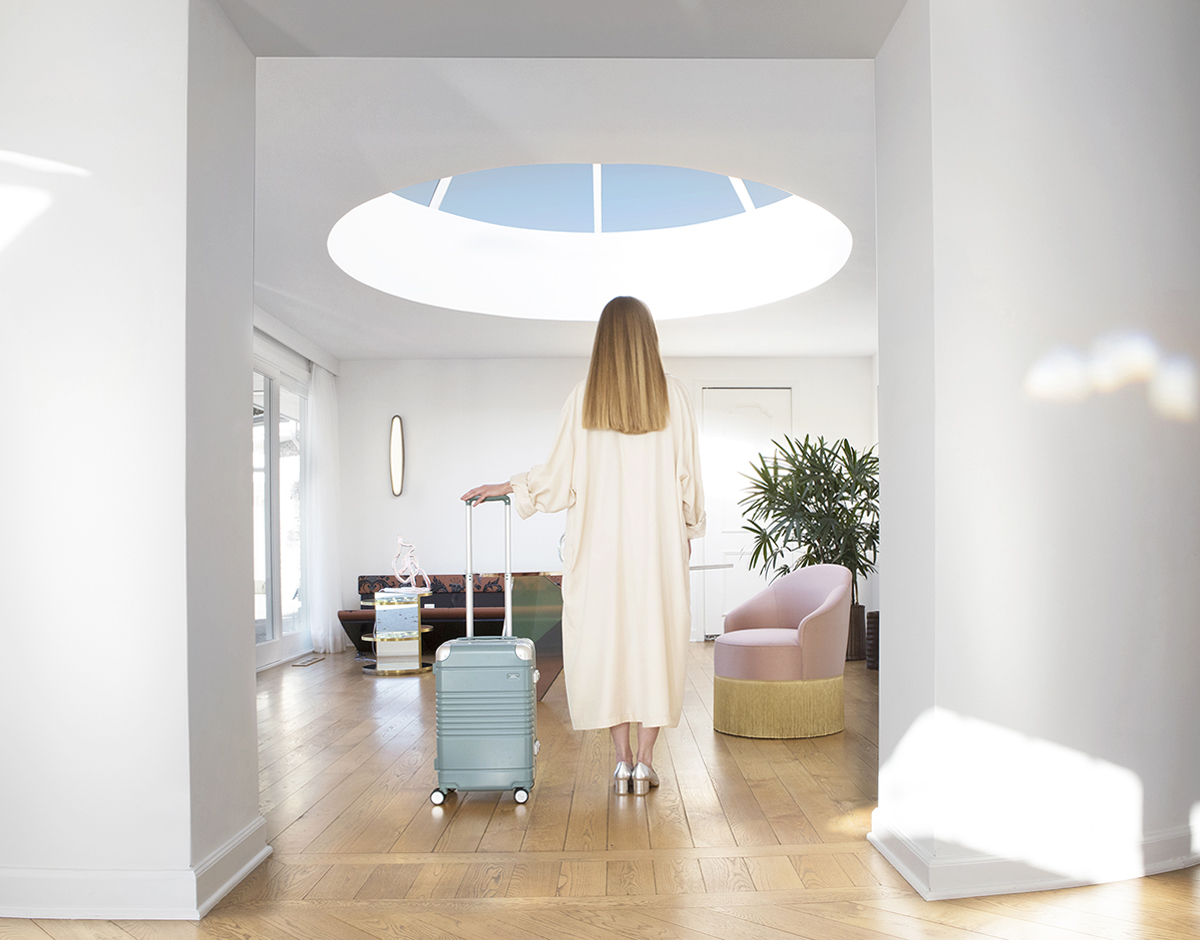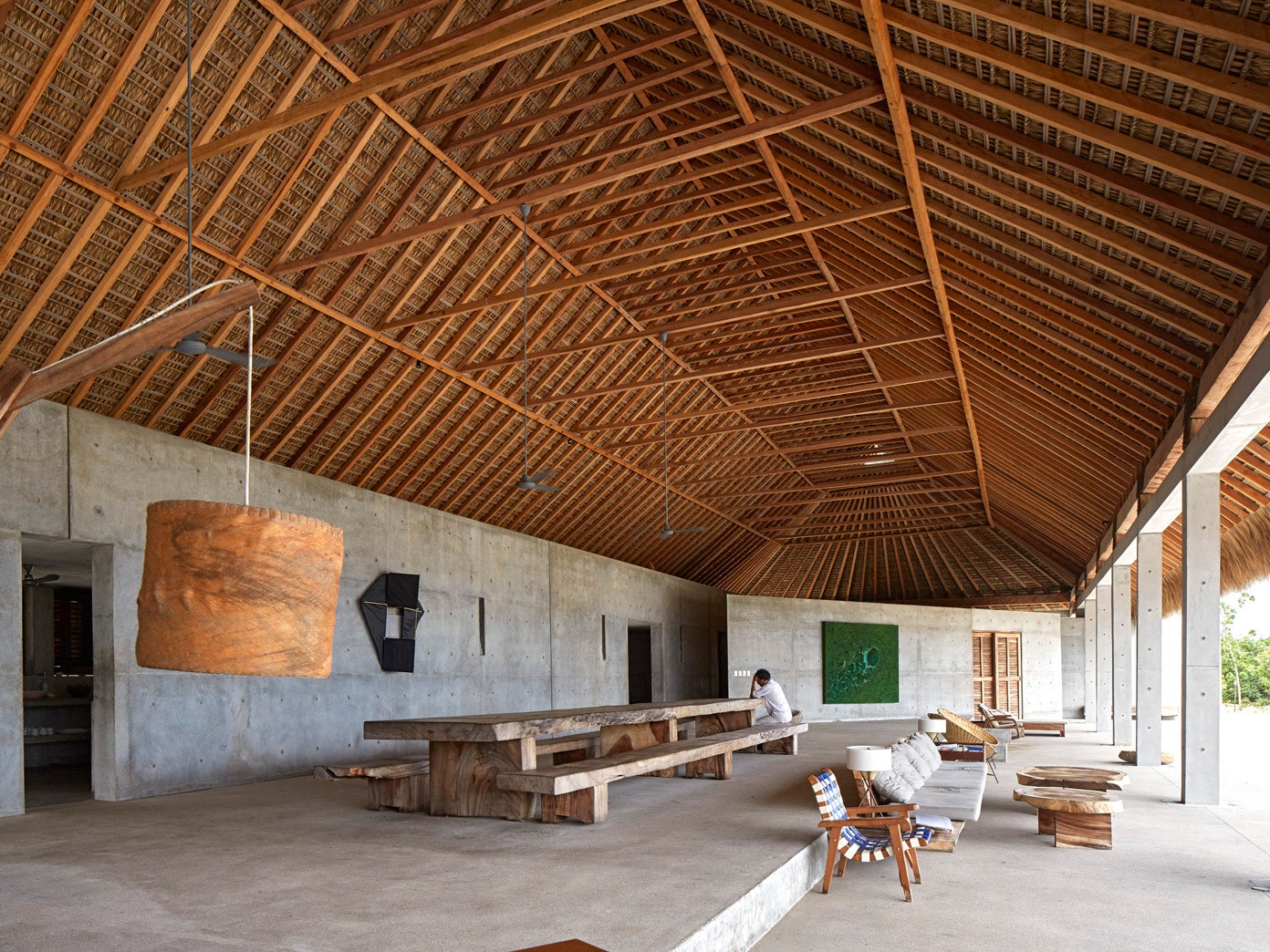
09.23.20
Q+A
A Round Table on the Ethics of Working With Artisans, and How to Respectfully Bridge Cultural and Geographic Divides
Over the last year, I’ve been laying the foundation for a new company that aims to connect Thailand and the U.S. through the universal languages of craft and design. As we completed our first exchange trip between a visiting American designer and the heritage brass-casting village of Ban Pa Ao, I found myself thinking about how designers can foster a respectful, non-exploitive engagement when they’re creating products with artisan communities rather than in factories. So I organized a roundtable discussion on the topic with three participants who have experience with these issues, and with bridging geographical or cultural divides: Peter Mabeo of Mabeo Furniture, which works with artisans and materials in Mabeo’s native Botswana to produce pieces by international designers; Carla Sodi, director of the Oaxacan foundation Casa Wabi (above), where artists come to collaborate with local makers; and Tantuvi‘s Arati Rao, who designs contemporary rugs that are fabricated by expert weavers in India.
Our wide-ranging conversation tapped into their experiences building deep and trust-filled relationships that are accountable to local values. In their work we are offered lessons on the fragility of these exchanges, why we need to shatter the rigid distinctions that separate ‘designer’ from ‘craftsperson,’ and how the slowing-down effect of COVID-19 could have a lasting positive impact on working processes into the future.
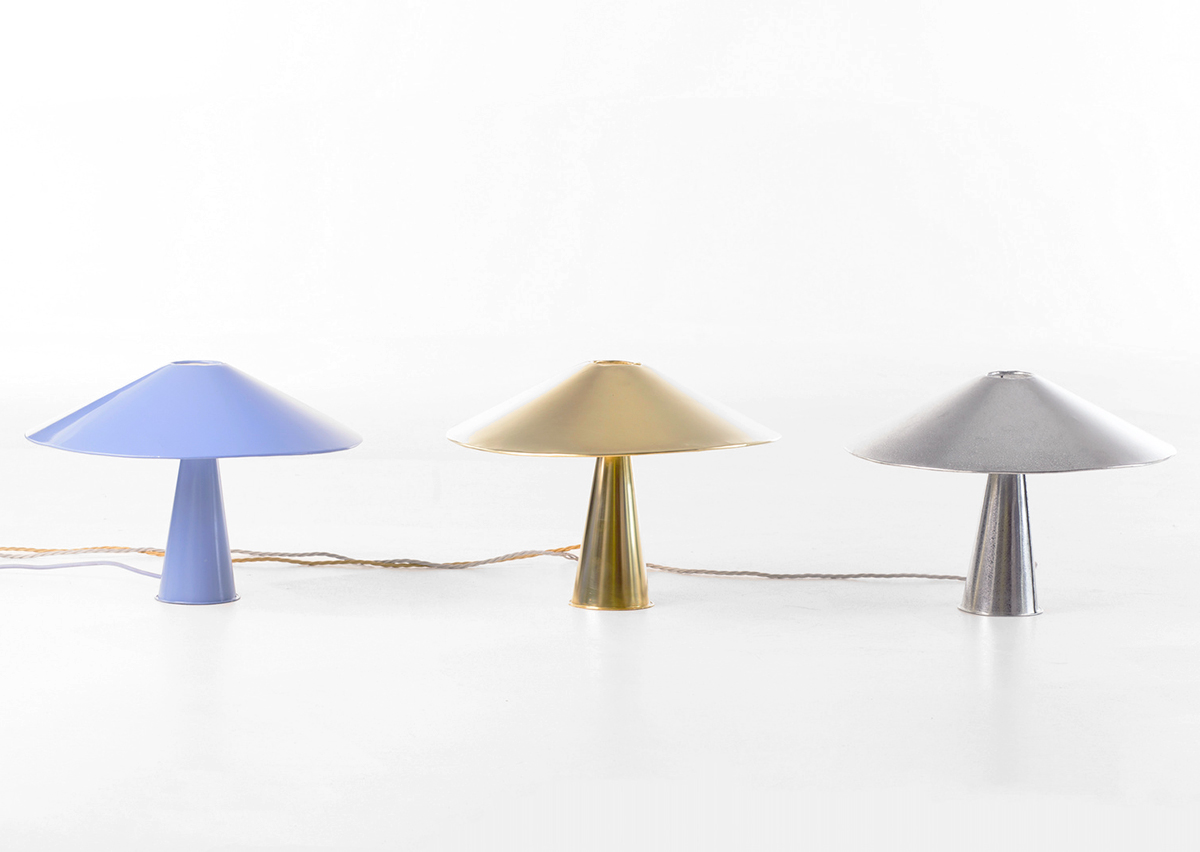
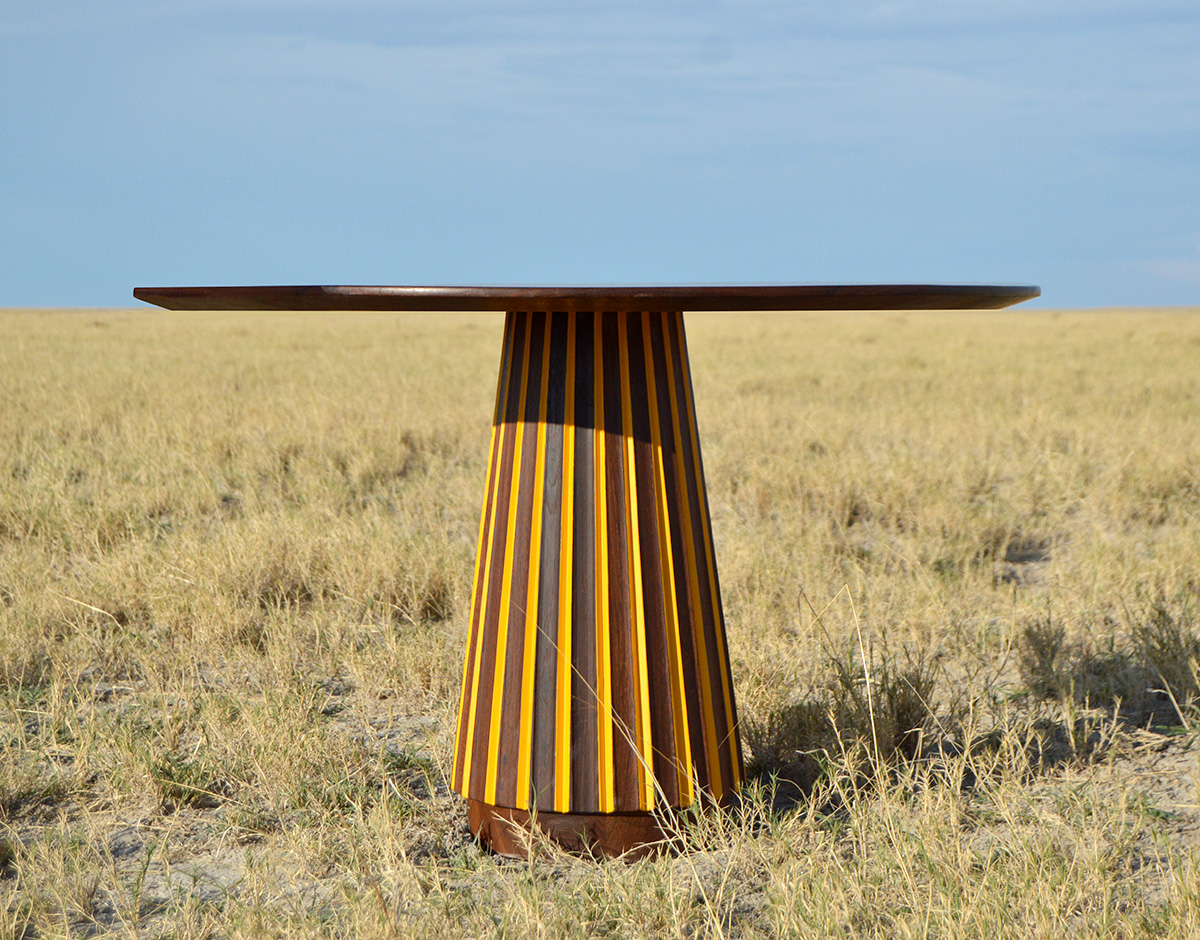
Ines Bressand and Patricia Urquiola for Mabeo Furniture
I’d love to hear about the origin story behind each of your companies or organizations, specifically through the lens of using art and design to connect people. Peter, when you founded Mabeo Furniture, it seemed like from the beginning, you chose to work with designers from outside of your own home country. What led you to seek out these collaborations?
Peter: There are so many layers to that story, but it was really a question of feeling insulated. I was part of the first generation of children born into a country which was now independent, so we were going through a lot of transitions at that point, where we were pushed to conform to Western-style education. I understood very early on that the information was packaged and limited in a very controlled manner. So that always made me want to engage the world from outside of this insulated perspective. Design offered me an opportunity to select and choose people who — even though they were very far away from me — thought about and saw things the way I did. My broad way of thinking, without the religious and educational influences that I had to conform to, was very free. So I believed that this kind of freedom existed elsewhere. That’s what led to me to seek out people who I felt were open-minded enough to see beyond imposed local contexts, who could experiment with me on the idea of universal craft and design.
Today, Mabeo is a furniture and accessories brand with over 10 years of experience producing collaborations with some of the worlds best designers and our local team of craftspeople here in Botswana. The aim of the brand is to make the work of African artisans available to the world in a considered way, to reflect certain qualities — an essential simplicity of form, an idea of purity, the conscientious use of natural materials, the dedication of the craftspeople, and the sensitivity of the collaborating designer with a reverence to the rich aesthetic heritage of Africa.
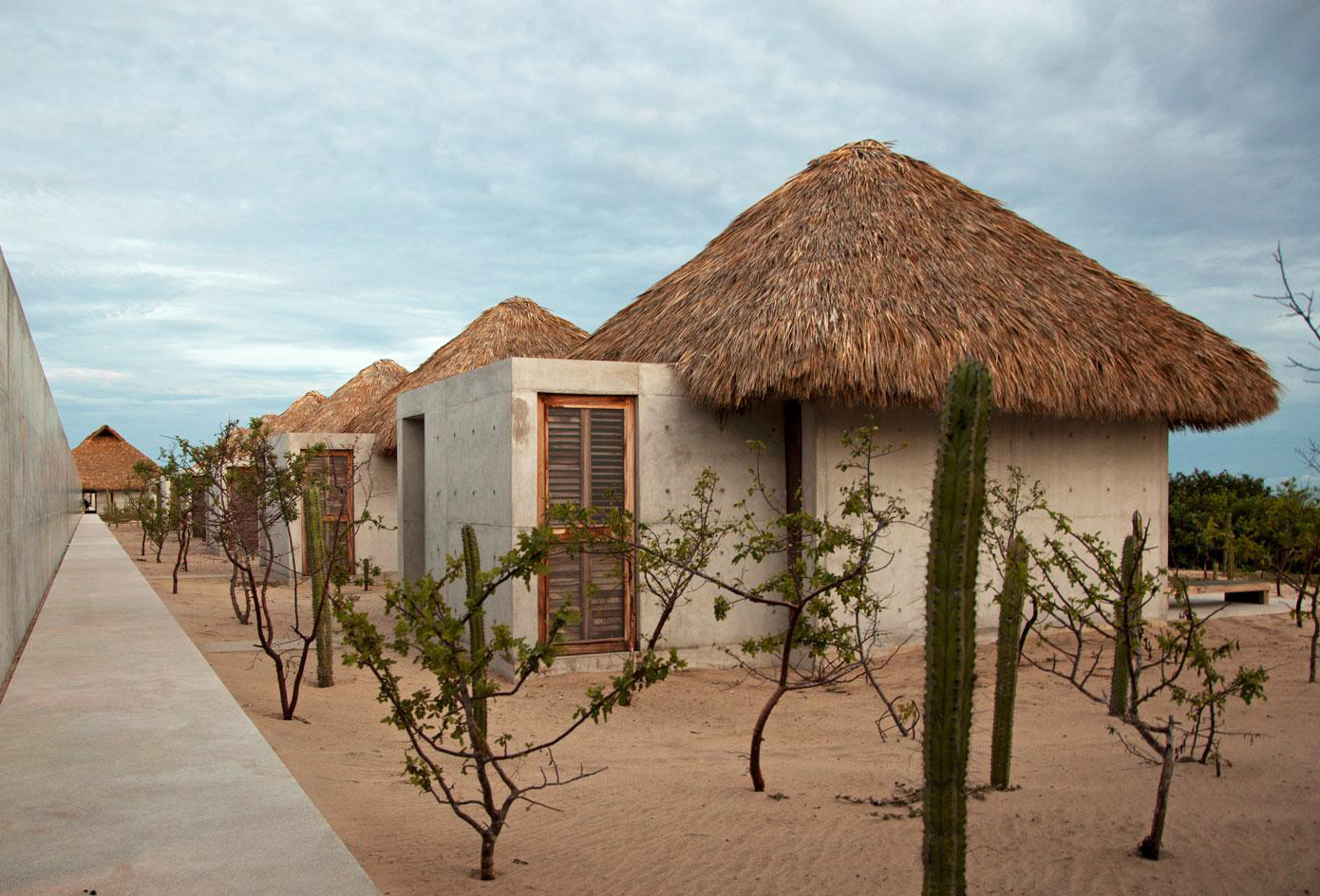
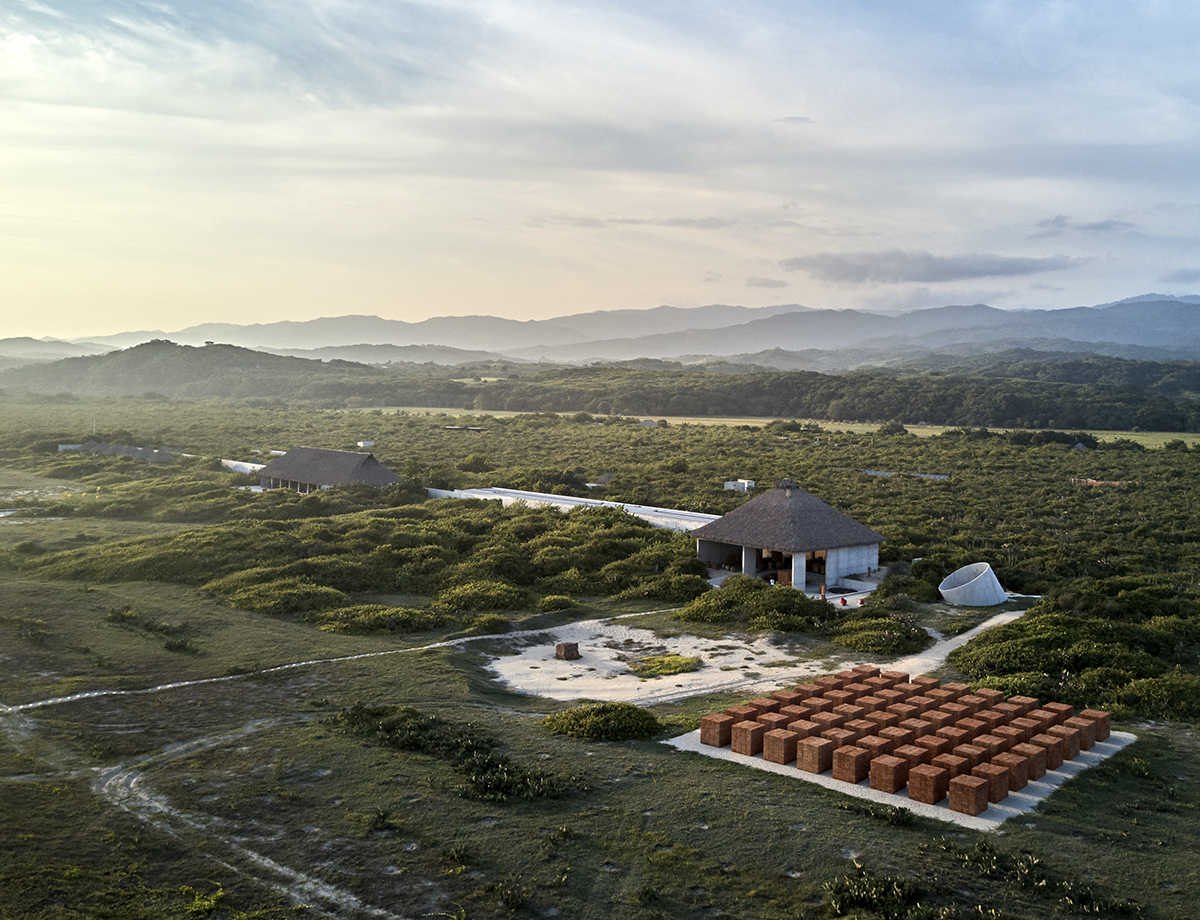 Casa Wabi
Casa Wabi
Carla, this reaching out beyond one’s immediate context reminds me a bit of the story behind Casa Wabi’s founding, where your brother Bosco Sodi asked the Japanese architect Tadao Ando to design your initial pavilions. Can you tell us a little more about how that first exchange evolved into what Casa Wabi is today?
Carla: Everything started when Bosco, who is a Mexican artist, did a residency in Japan. He came back and said, “Everyone should have this opportunity, so I need to create something like this in Mexico.” Bosco met Tadao Ando through a friend and started to have a dialogue with him, asking him to join in this huge project. It was very interesting because Tadao wanted to do some things in his own way, but there are things that you can’t do in this weather, because of the humidity, for example. There was a really nice dialogue between the palapero — the expert builder of the palapas — and Tadao, who wanted a certain kind of palapa. The expert said we can’t do it that way because it’s going to fall down, and Tadao said, I don’t care!
So the point that I want to go to is that the whole foundation is based on creating these dialogues. It was a really beautiful thing that the very first dialogue occurred between Tadao and the construction team in the area, which may not be as sophisticated as what a Pritzker Prize–winning architect is used to working with. Later these dialogues moved into our residency program, where we bring artists from all disciplines — they could be writers, painters, sculptors, dancers, performers — to work with the local community here in Puerto Escondido. Our residents develop projects in close collaboration with the region’s schools and artisan communities and have sought, among other things, to rescue and reassess local languages, verbal memory, and collective history. Through initiatives like our clay and pottery program, we aim to boost the local economy through traditional crafts, to promote the conservation of local species, and to foster the development of natural resources in the area.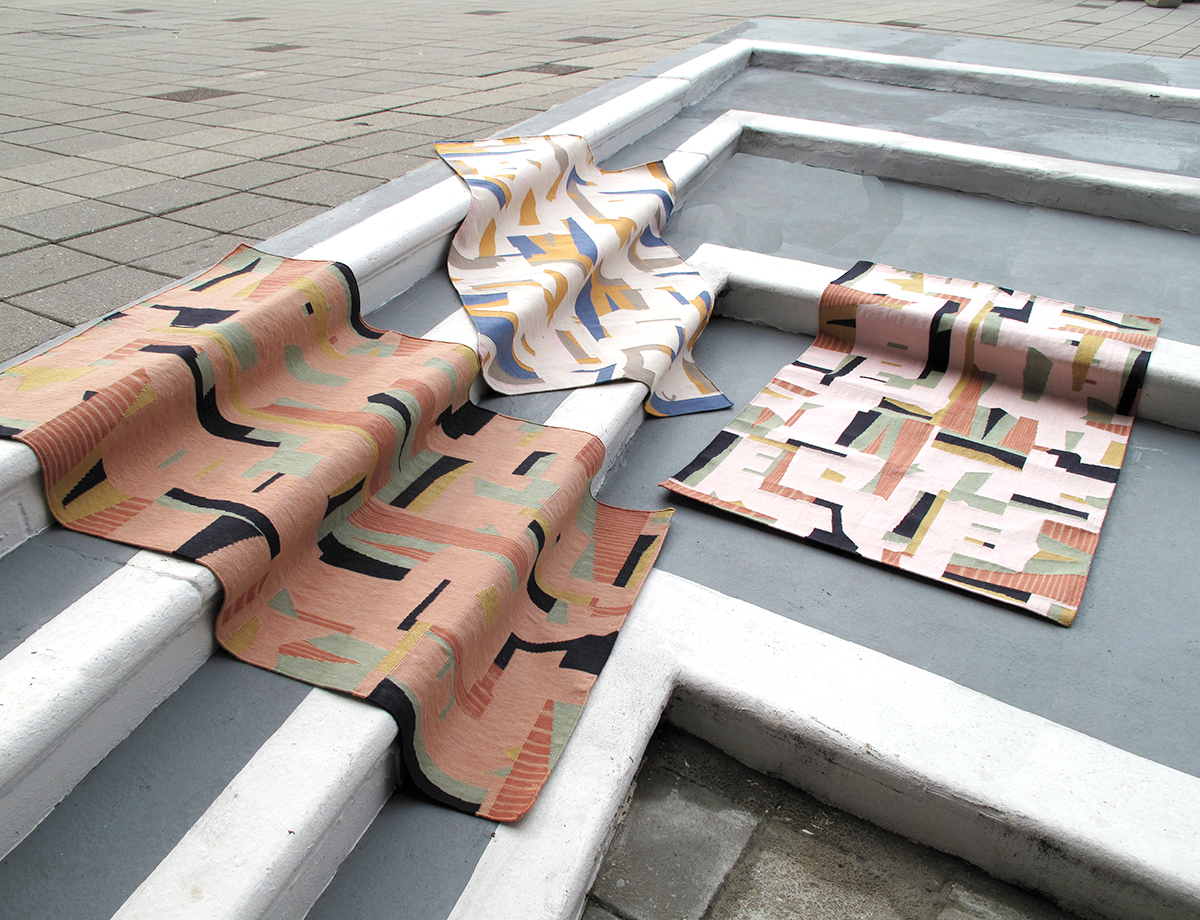
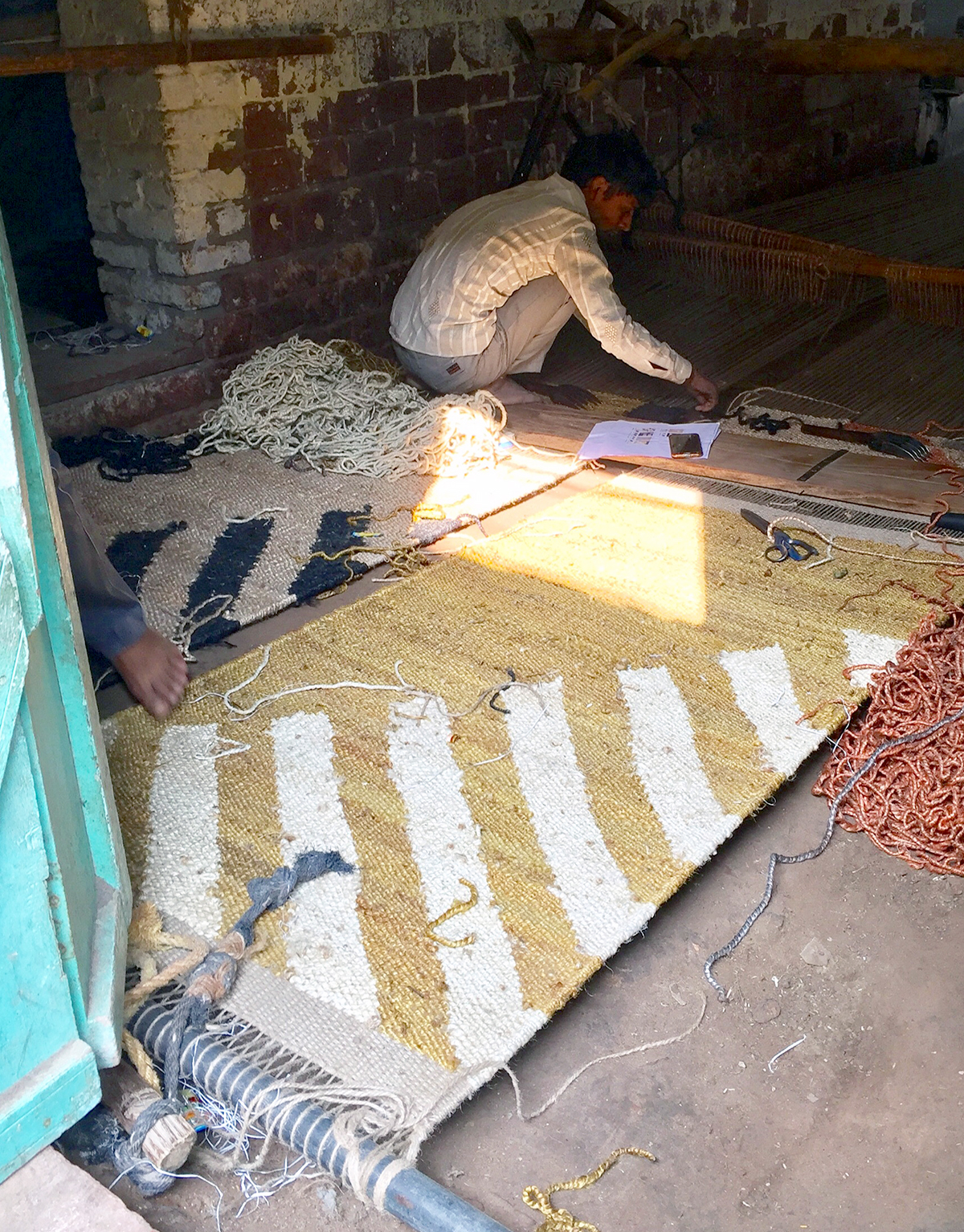 Tantuvi rugs
Tantuvi rugs
Arati, can you tell us about your entry point into Tantuvi? I know you came initially from a career in fashion. Was starting Tantuvi a way for you to connect more with your own Indian heritage?
Arati: I came from working in a corporate environment where you don’t know who’s making your products or where they are, so I felt like Tantuvi would offer me a way to connect with my culture and to learn more about India. I always wanted to do something on my own with artisans, and India is so rich with textile traditions, so that felt like a very clear way to do it. I spent about eight months traveling, and we visited different communities of woodworkers, weavers, pottery villages, silversmiths, all kinds of craft. It was such a learning process and educational opportunity to work with artisan communities that are from regions that have been doing the same craft for 400-500 years, which is something we don’t really have here in the States any longer.
It was really important for me to understand where I come from and what I could do to work with the communities and support them. When I started producing work two years after our initial trip, I focused on designing fabrics with one hand-loom-weaving cooperative in South India. Today we work with three different weaving communities across three different states. Our cotton rugs are produced by eighth-generation weavers in the Thar desert of Rajasthan, our hemp in a former Mughal capital, and our fabrics at the same place we began in, South India.
Peter, I’m wondering if you can give us an example of Mabeo Furniture’s collaborative process. What’s the trajectory from conception to outcome?
Peter: Design and the products we make are a medium for very broad ideas, and they cannot be confined to a particular technique, motif, or process. Sometimes it’s an idea that’s literally translated, other times it’s a process that stems from a joke, or a serious discussion about industry or life. The designer can lead the way, with me being the intermediary, to determine what comes next as we work our way towards condensing something substantial into a focused idea. It can come from observation, impulse, or an evolution from a pre-existing idea.
For example with Garth Roberts, for the Seri Series, which is based on a pattern on the edges, the idea that came later on was to convert a typically slow carving method into something that can be applied in our production setting. This resulted from a slow process on another idea where the details were lost in translation. So out of a kind of frustration, Garth decided to try something that had an immediate effect. As with other methods we use, we achieved this through hacking a hand power tool — using the tool in a way that it was not intended — in order to apply the edge detail. Of course then there was a process of applying the magic, the proportions, in a way that a great designer can. The talent and skill of the designer, the uniqueness of the collaboration, and the ability to experiment by all resulted in a collection that exceeded expectations from the initial, unsuccessful idea.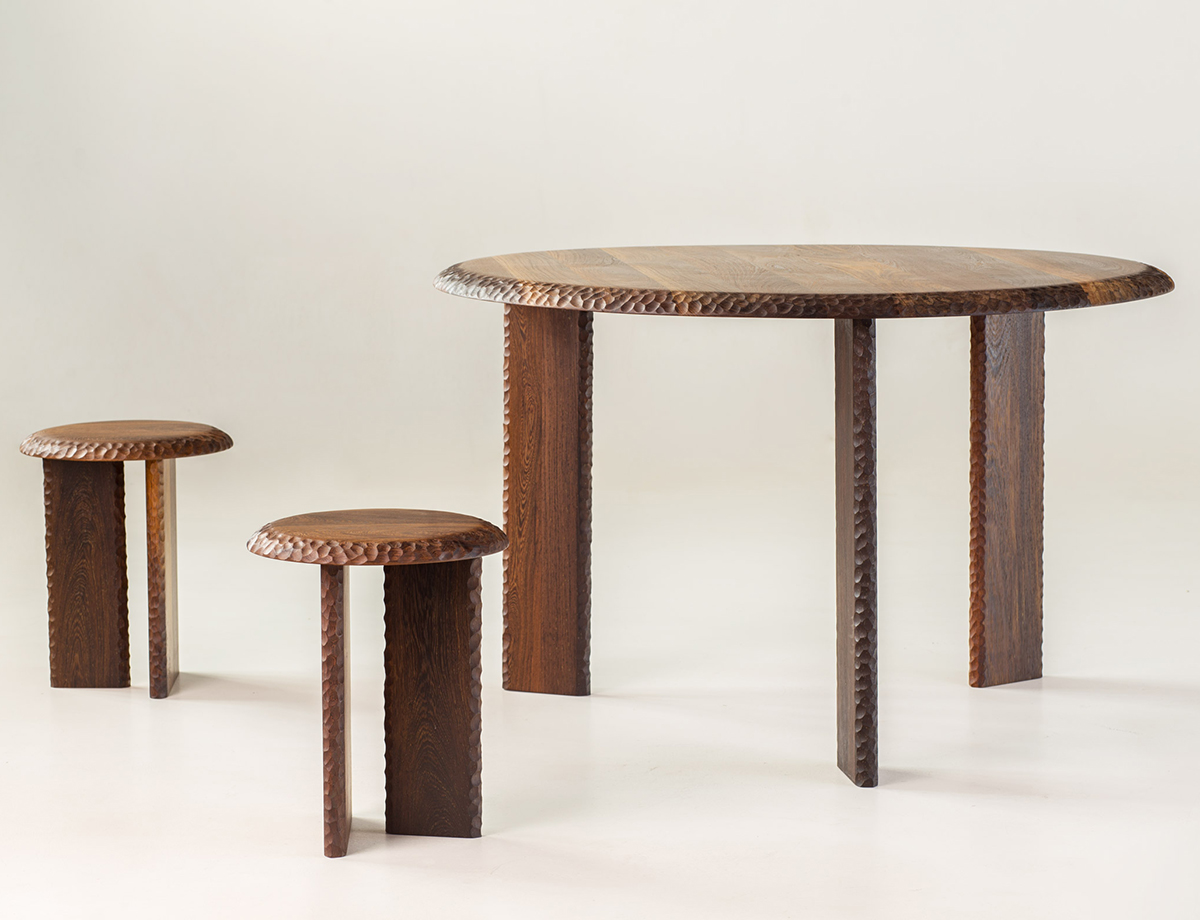 Garth Roberts for Mabeo Furniture
Garth Roberts for Mabeo Furniture
When people interact with a community that’s not their own, it seems crucial that they educate themselves on local sensitivities and that they develop strong relationships of accountability. That can be one way to avoid the pitfalls of those sorts of ‘fly in and fly out’ design initiatives. But cultivating those deep relationships isn’t always easy.
Arati: For us it’s been about establishing a sense of trust. One thing that’s helped is my own heritage, and being able to understand the culture and local values in a way that others might not. I’ve always tried to consider our weavers’ interests. It’s not, ‘here’s an idea, now go do it.’ I want to know their feedback, what they think about the new design or a new fiber I want to try.
In India, so many communities are now working in a factory environment rather than in a cottage industry, because it’s appealing for Western production purposes, even though it’s often better for the artisans to work from home. But the weavers have been removed from the conversation in many areas because of agents that are go-betweens. Sometimes there will be local festivals, and they’ll overlap for weeks at a time. And the weavers are not going to work at that time. Money doesn’t even matter, there’s no extra promises I could possibly make. So I accept that there’s something great about that, that they value their time and their traditions and rituals over meeting a deadline or making my client happy. That’s not part of their world and they shouldn’t have to adjust for that.
Carla: What used to happen in Mexico is, as soon as you have a foundation, when you approach a community, they expect you to give them money. We had to convince them that we were going to be there long term. We believe art and culture is a human right, it’s not the cherry on the cake. At the very beginning we were almost begging them. We could be bringing in the top artist in the world, and they would say ‘I don’t care, I don’t want to work with a guerro!’ (blondie in Spanish). But they started to see that this process had potential for a new type of interaction. All the projects that the residents do have to be a very long-term project that stays forever with the community. There was a fear that these artists might come and then leave quickly, like they just want to appear in a picture and won’t care about us afterwards.
I always say that at the very beginning we weren’t building bridges, it was more like a piece of thread. And now I say that we have built a ‘crochet bridge.’ If you pull one thread, it can unravel. We have to be very careful and respectful. Now, after six years, we have the privilege of the communities starting to approach us about new initiatives.
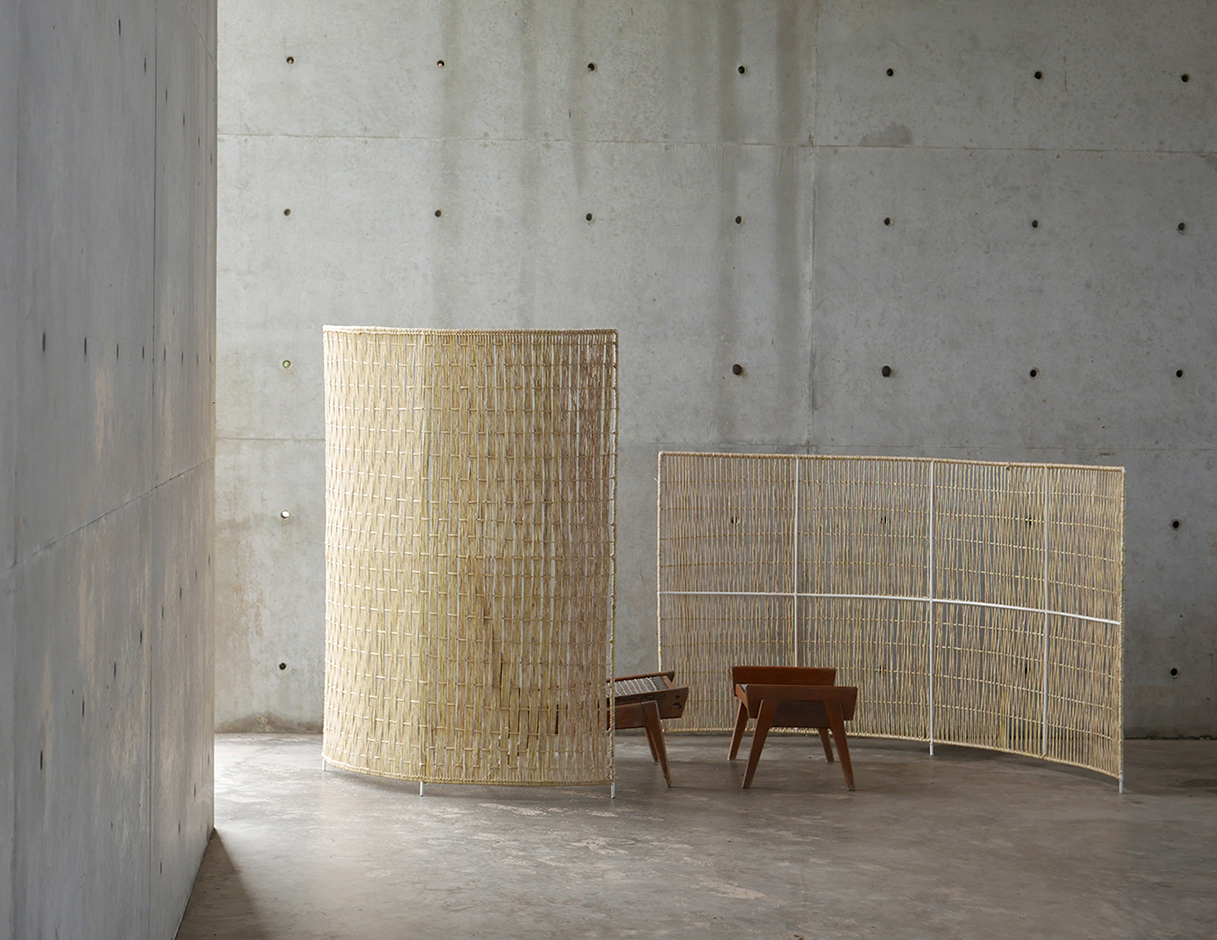
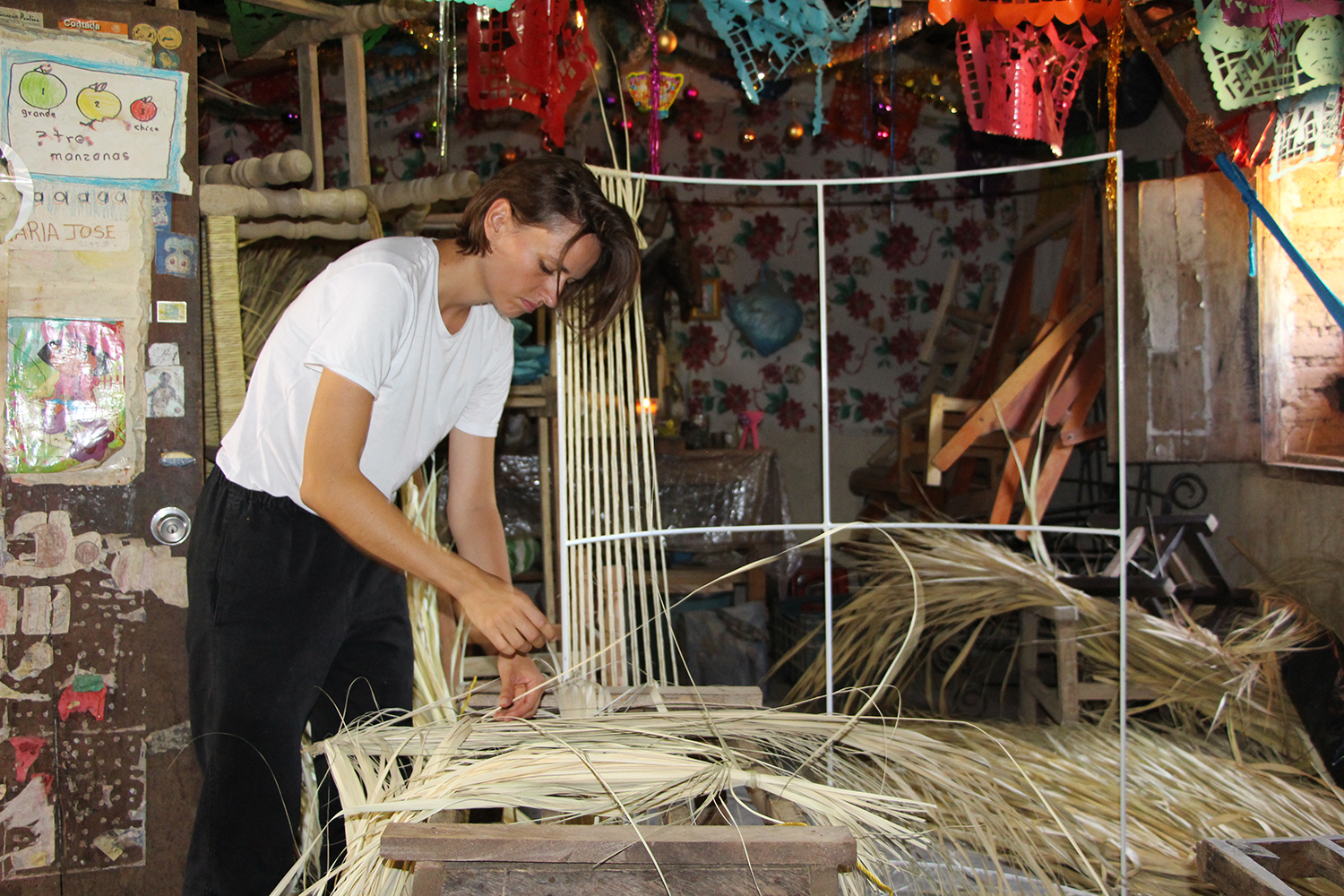
A screen by Swiss artist Julie Richoz at Casa Wabi, and Richoz working with palm fronds
Right, these relationships can be very fragile. It can’t be something we just quickly abandon.
Peter: The word ‘community’ has a connotation for me. It’s a beautiful word that’s been corrupted to describe a group of people as lacking. In a similar vein, the word ‘craftspeople’ — or having to use any word or imagery to bring exclusive focus to us as a group of people engaged in craft — carries this connotation. But I realize that when engaging, especially with the outside world, this is what forms the basis of discussion. It’s also not very inspiring to first have to deal with issues outside of the process of creating, collaborating, and making, but these are categories I had to fit the work into.
In the beginning I thought, what’s the best way to do this? Things have been so decimated in here in Botswana that there’s very little activity by way of craft and culture that’s independently active. Most activity is limited to safaris and tourism, and any extension to craft still has this basis. Do I set up a foundation to allow for a broader sense beyond commercial activity? Or a training institute of sorts? What I realized is that if I separate my primary way of making a living from what is yet to be made viable through community foundations and training, it perpetuates the problem, as though I do not see value in what’s already here. So I decided to set up a commercial entity, with immense confidence, where the value itself is built on the fabric of the talent, the craft, and the beauty that was not easily apparent. A refusal to see the geographical, cultural, and psychological distance as a barrier. There was no other way other than going straight to the point by creating a design brand that would be a basis unto itself, allowing our identity to be built on the realities that are here, and that we would weave our way through the process. Outwardly we have built a structure that the outside world can identify with, but a totally different way of thinking had to be stubbornly practiced.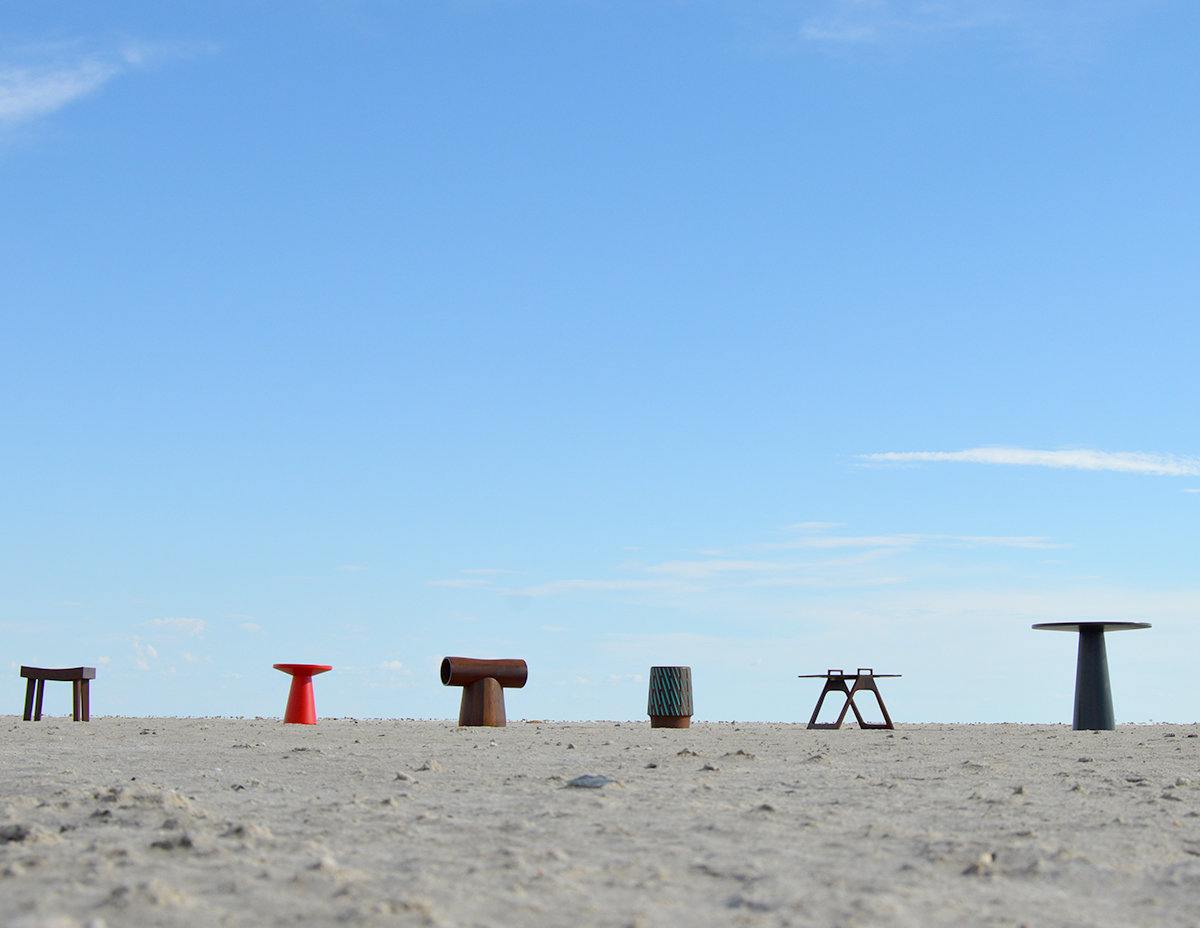
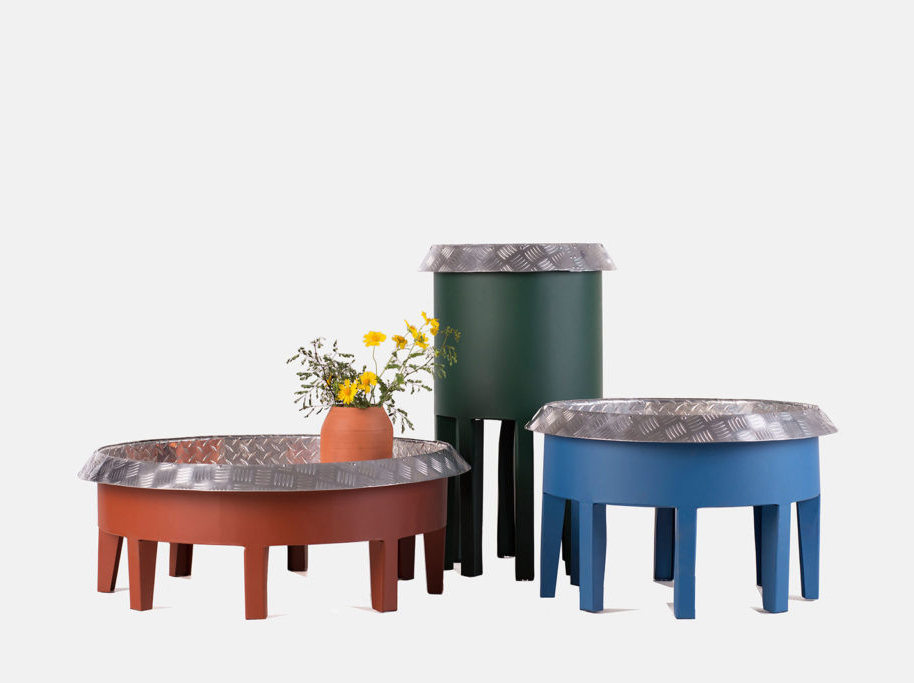
Mabeo Furniture
In many ways I feel like the work you’re all doing is being ‘interpreters’ — you’re connective tissue between places, cultures, and communities. What’s key is being open to the dialogue, and that itself can be a struggle for some designers who are used to being in complete control of the creative process. So I love this idea of letting go, and what emerges from that can be quite rich.
Arati: It’s interesting because in the beginning our master weavers really didn’t like our designs. They thought they were so weird and abstract compared to what they were used to. But there were two families who were excited and eager to work with us. It took time, but now they really like the challenges that come up. Our rugs aren’t traditional warp and weft weaves — we have to graph it out and there’s all these extra steps — but they’ve really gotten into the idea of problem-solving with us. It’s interesting what we’ve learned from them through the whole process, especially ideas that the weavers have come up with on their own. We try to give them agency and the value of being more than just skilled labor. They can have ideas, and can think conceptually. It’s important to make sure the community knows how much they’re valued and how much we need them. Not that they just need us for monetary reasons.
A great moment for us was when we created our Kulfi collection, which is a very abstract, colorful series of rugs. There was no real pattern or easy-to-follow method to weave them. The weavers were up for the challenge, and we graphed out the whole composition. They told us it would be difficult and we let them take over from the graphing stage and do what seemed most intuitive for the design on the loom. In the end it was perfect; the outcome was so wonderful that I was sincerely shocked. These are still my favorite rugs.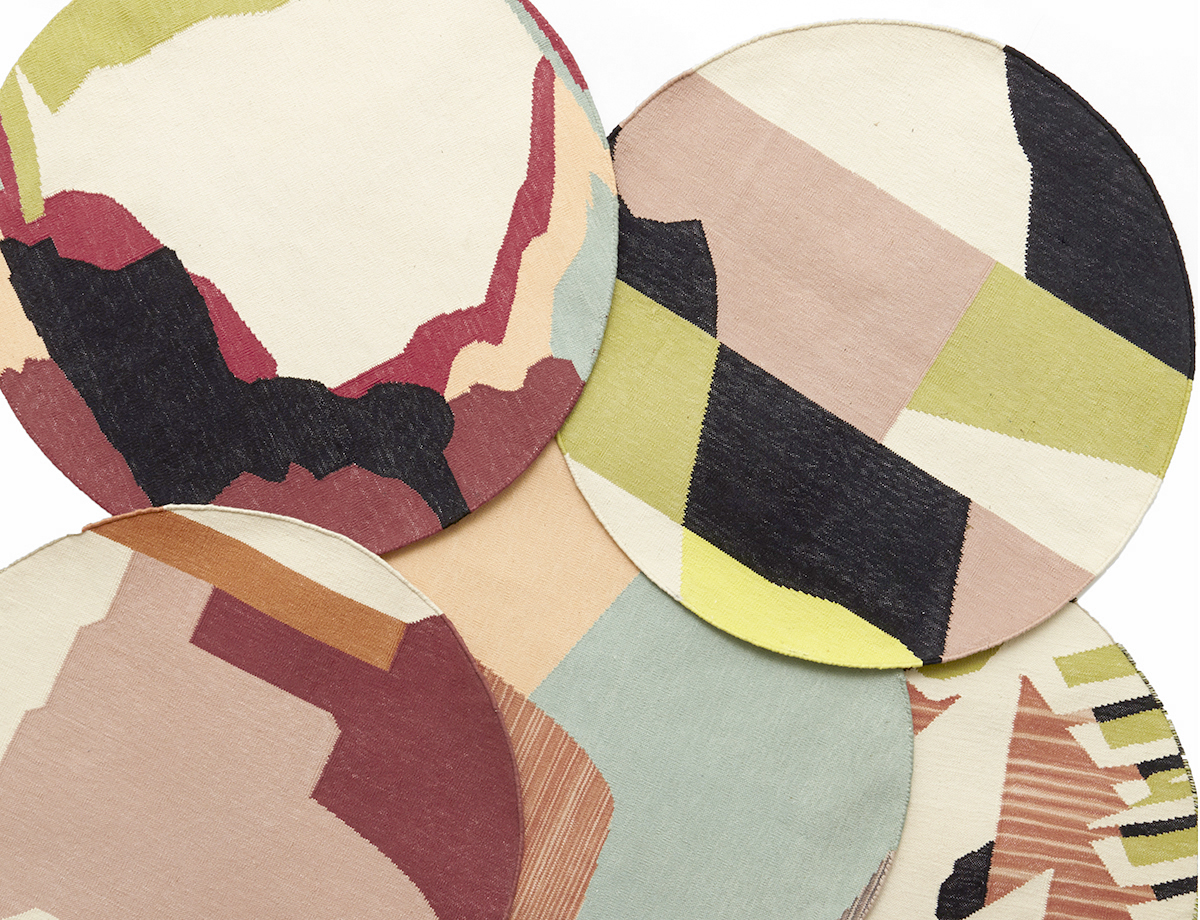 Kulfi rugs by Tantuvi
Kulfi rugs by Tantuvi
I recently watched an interview with the architect Bijoy Jain where he explained that rather than refer to his local collaborators as craftsmen or artisans, he prefers the term ‘thinkers,’ because that better describes the fullness of what they do. These are people who are encoded with a deep knowledge. I’m curious if your practices are trying to help break down those traditional labels that separate ‘craftsperson’ from ‘designer,’ which has created a kind of hierarchy in our industry.
Peter: I do like the idea of breaking down a classification or the blurring of boundaries, but distinct classifications within our work are impossible to maintain. If you come with this rigid mindset with the idea of imposing a preconceived idea, then good luck! The building process for us comes out of an initial idea of order, but with a clear understanding it’s going to be a result of its own evolution. The limitations are creating the outcome. So the designer, who you were saying might be rigid, will come in with a very clear conceptual idea of what they want to do. But it’s a learning process because you have to make compromises that you aren’t normally accustomed to making. If you don’t, the project will be conflicted or compromised.
I can’t prescribe and say, ‘This is the position the designer will hold and this is the position the craftsperson will maintain.’ By virtue of the fact that I’ve placed the craftsperson at the core, they are the basis of the whole company and the whole design process. Some of them started with no skill whatsoever. Even that idea of skilled and unskilled is something I question. If you can’t weave, and you try and weave in a naive way, something interesting might come out. You’re a free thinker. You’re not constrained by your technique or lack thereof. That’s what keeps things interesting for me. As the relationship is nurtured during experimentation, real order borne out of each interaction will make itself clearly apparent. The kind of order that no amount of top-down formal training, that is currently so pervasive, can create.
That give and take is the beauty of the process. Carla, I’m sure this is what happens with the residents when they’re working on their collaborative projects. I’m thinking for example of that really nice collaboration between the Swiss design team and the local palm artisans.
Carla: All of our projects are a result of the dialogue between both parties. What I mean is that we are not conquering the communities. We are talking about a country that is full of so much culture and so many traditions. So what’s funny is that when the artists arrive at the beginning, they might think, ‘I’m going to come and teach them how to do things,’ but obviously the ones who are the actual experts are the local people. These are people with so many traditions who are ready to teach the residents. Once they arrive they realize that they both can win, and you can learn so many things without ‘using’ the community. That’s an important rule for us. No artist can use the community as cheap labor. Any collaboration that happens is owned by the community.
Who am I to arrive and say that the things you are doing are wrong, or you should do it this better way? The only thing I can say is, ‘maybe we could try doing it this other way together, and if you like it, we can continue.’ The first word that always has to come to mind is respect. Marginalized communities are more respectful than anybody else in the world, from what I have seen in my life. They are so giving. They share food or invite you to sleep in their houses. So you have to respect their way of thinking and doing things, because they have so much wisdom in their life.
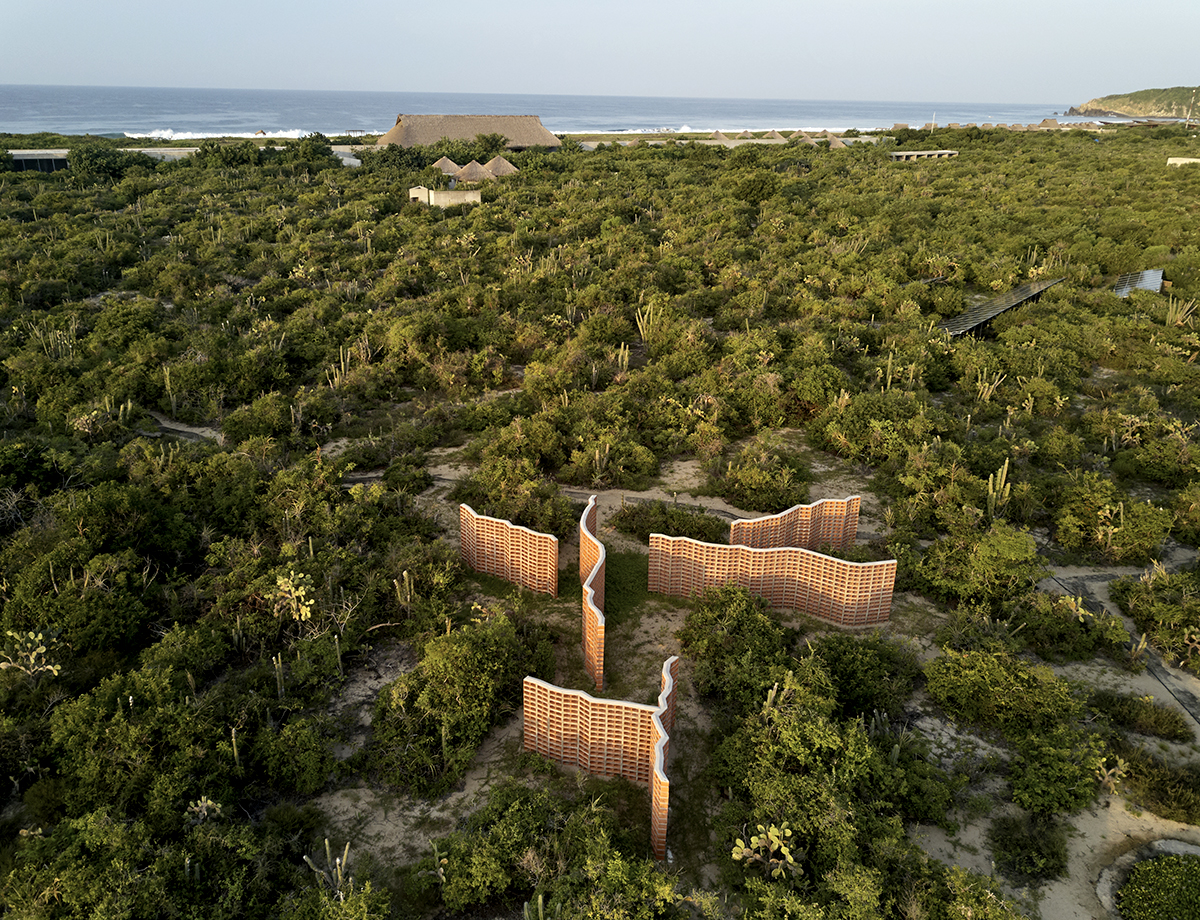 Casa Wabi
Casa Wabi
There’s so much generosity that can emerge when you allow yourself to engage more fully in this daily life. That’s been my experience in Thailand, where we grew closer by sharing meals and doing home stays with the people we were working alongside. I fear this is lacking when brands come into a place purely to use that ‘cheap labor.’ Arati, you were telling me about a troubling email along these lines that you received recently.
Arati: Yeah, this person asked me if I could connect them with my weaving community because they wanted to make a Southwestern, vintage-inspired rug collection. I’m always so angry when I receive emails like this. It’s flippant and careless to think, ‘I want to go work in India because it’s cheaper than Mexico or cheaper than Peru.’ But you’re taking designs that are indigenous to a specific community, and asking artisans on the other side of the world to make them, when there’s no connection to the place or the icons you want to use in the design. You’ll see a lot of brands who are making rugs in India that are very clearly Moroccan or North African in origin. These designs have meanings. Rather than taking away from those communities and erasing them, it would be much better if you could employ the people where the work originally comes from.
It’s a lack of respect both for the community that they are taking from as well as the one that they’re working in. There have been a lot of conversations lately about that line between cultural appropriation or appreciation, but I think we would all agree that we do still need people to mix and meet and share ideas. Peter, I think that’s part of the beauty of your process, that it starts with an invitation.
Peter: With our designers, it’s really about the approach: What is your standpoint, your attitude, your mentality, your instinctive inclinations? Some designers are super open-minded while others are very strict, and will ask the craftspeople to go beyond the context of what their skills are. But what’s more important is that there’s space for interaction and expression. The product is just the outcome; it’s secondary. Making a product is really just an excuse for us to relate, you know? A very difficult one, but an excuse nonetheless, where all aspects of material, craft, people, design, and mentalities have to be valued and revered. The reason I started Mabeo was to have the freedom to start a universal dialogue that is multi-dimensional and equally directed from multiple angles in our terms.
An active process that compels one to dive in head-first makes whoever’s involved, like an international designer, realize that even as open-minded as they might perceive themselves to be, they’re actually quite closed-minded as circumstances to be dealt with appear. Hot topics of the day, like sustainability and the recent topic of cultural appropriation, or systemic racism in the creative industry, are engaged from a totally different place when one is actively involved. Having an opportunity to work the way we do makes it necessary to confront these issues directly in our projects. As we engage in making products, the result isn’t purely logical. If it’s not difficult, then it’s not really building or transcending or breaking through whatever was there before. So the beautiful evolution of craft and design has to be directly proportional to a beautiful evolution of culture, of relationships, of how material is handled, right down to the simple joy of living with the functional object made. The minute hand gestures and design ideas expressed have to make minute contributions to the overall.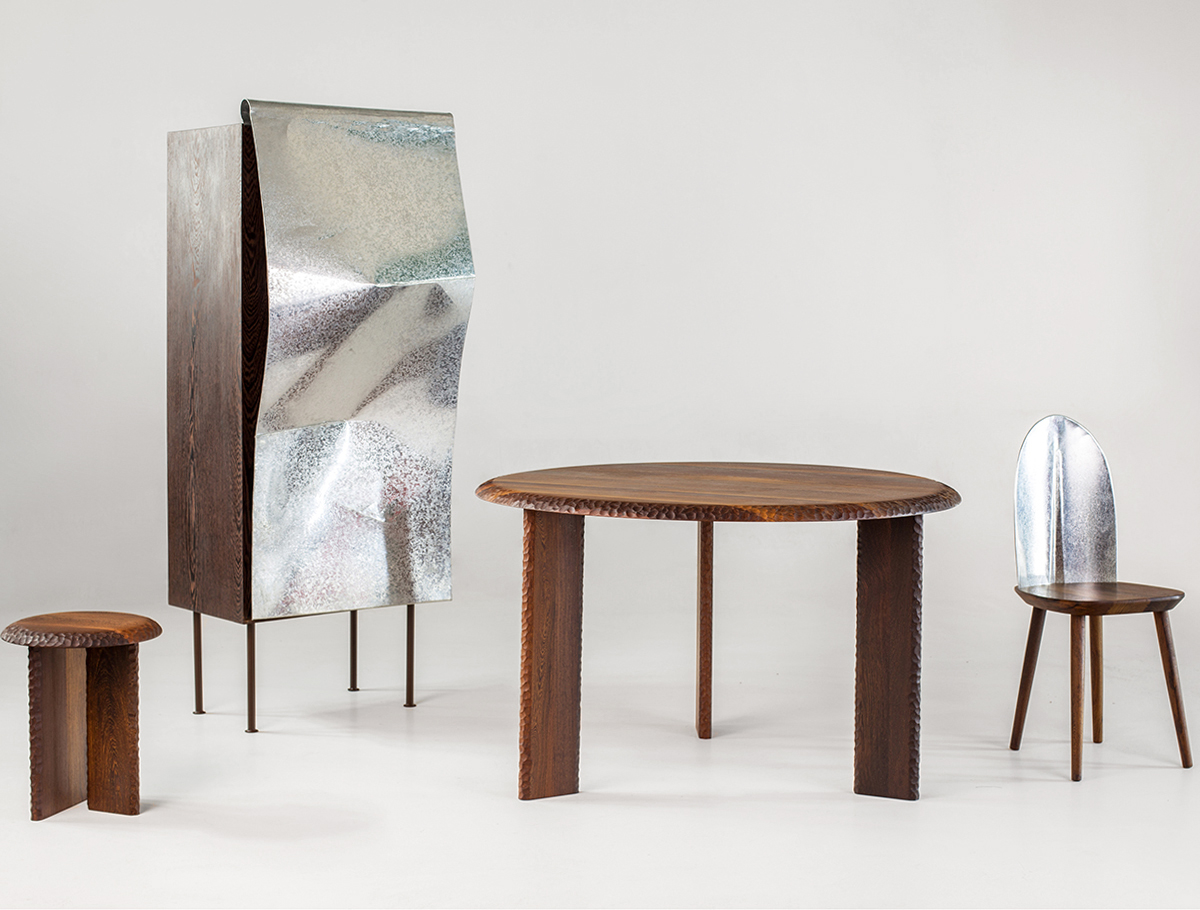
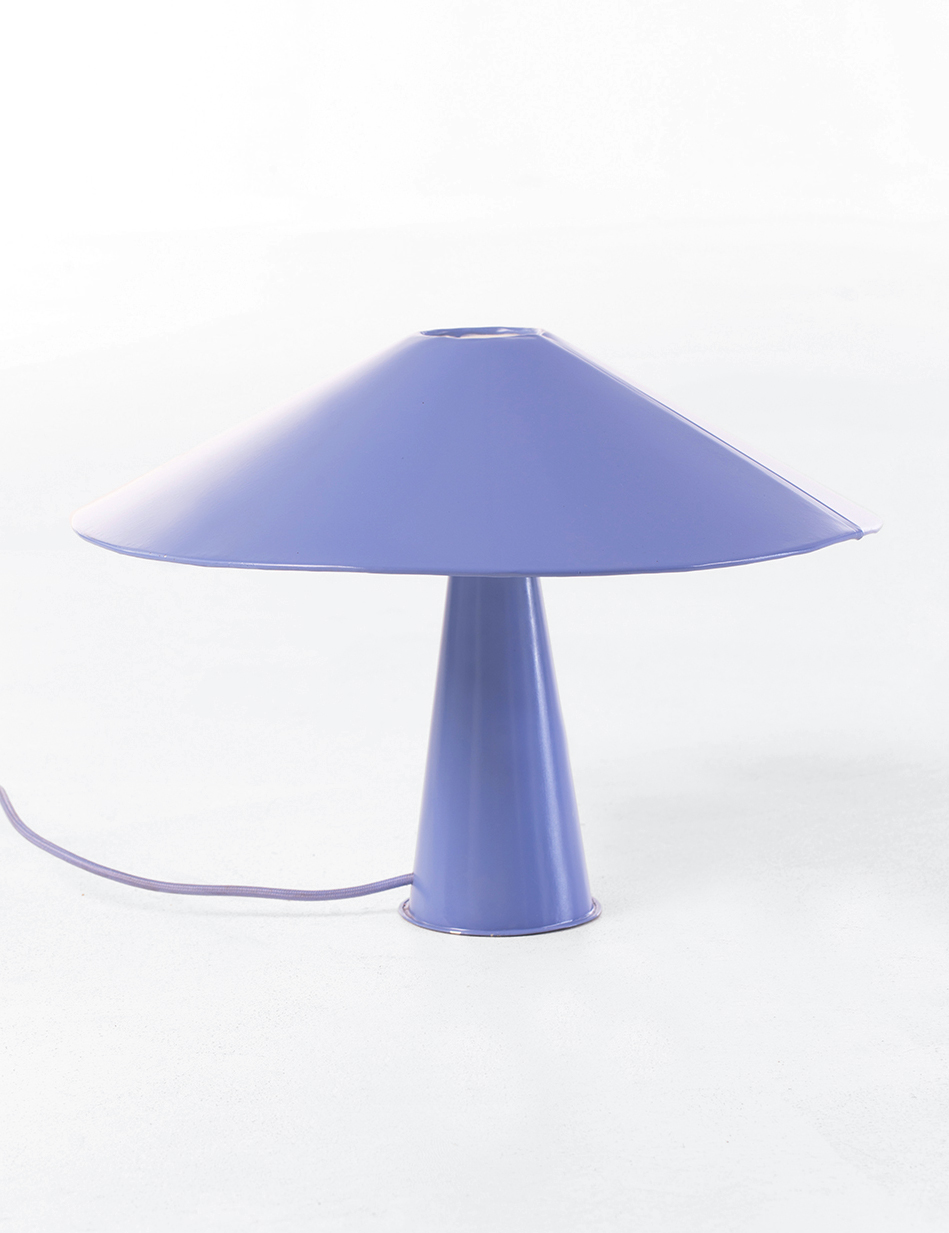
Ines Bressand and Garth Roberts for Mabeo Furniture
This idea of seeking out difficulty as a means of breaking through is so important. I love that even in the name Casa Wabi, the second half references the Japanese concept of wabi-sabi, which is about embracing the beauty of imperfection. It’s a reminder that we can’t strive for perfection, because if we do we’ll never break out of our one way of thinking.
Carla: Nothing is perfect. At the end there is nothing perfect. Who defines what that is? There’s no perfect face, or furniture, or textile, or art. So the important thing is to respect that all things are perfect in their own way.
Arati: And also I think when something is handmade, it’s not a machine, and there’s always going to be that individual’s touch, and however they maneuver the material, that’s going to affect the final piece as well. Those inconsistencies are something that I personally love and think makes something more beautiful.
Peter: Unless perfect means getting the right amount of press coverage, and getting the right income from a product, because it seems like that’s what people are preoccupied by. So that’s one of the problems we face. The opposite of beauty in design is a lot of ugliness behind the scenes: the business side of it, the contracts, the disagreements. These are some of the things that I think we have an opportunity to direct in a different way somehow. We can bring a different mindset, a different context, to the so-called ‘developed design centers of the world.’
Right, there are definitely logistical and technical challenges that come up with running a business. I’m curious, have there been specific issues that emerged recently due to COVID-19?
Carla: At Casa Wabi we’ve had to change the way we’re working with the community. For example, we have an artist who is making a mural from tiles of wood, so we’re sending each student from the school a piece of tile. They’ll draw on the wood and then the artist will put it together afterwards. We also have our mobile library program where we lend books to the local schools, of course now with some extra sanitary requirements. So the point is we just keep going. We won’t stop. COVID won’t be stronger than Casa Wabi!
Peter: It’s funny, we’ve been talking about the beauty of imperfection. The client might talk about the beauty in the weaving, ‘Oh I love when the line is not totally straight’ or something like that. But then when it comes to the imperfections of the working process, when there’s a delay in delivery, all of the sudden the imperfection is not good! So you want to enjoy the imperfection, but without enduring the cost of it, and waiting the necessary time. Arati mentioned the festival season in India. For us it’s funerals; these are very important and people need to take weeks off. It’s all a part of the process. You have to embrace the whole picture, then you get to also have the authenticity. I may sound a bit radical with this view, but I want to simply point out that the industry and the marketplace has to shift, to create more of a platform, especially for the craftspeople and artisans who work in factories around the world. The whole structure has to be reconsidered. Not through a new model or system but through actual engagement, the real kind, not the marketing kind.
Arati: Our culture has become so focused on instant gratification. Amazon and all of these stores have taught us that you see something online and you can have it at your door the next day. People have become mis-educated on how long things take, and the process behind it. People say they want to support artisans, but then we have these unforeseen delays. In India there was one of the strictest lockdowns in the world, so we had no goods arriving. And some of our clients could understand, but others couldn’t and there was nothing we could do to explain it to them. This is a moment where I think we’re all reevaluating our work and process on some level. We have been trying to switch to ocean freight, but we never could due to our projects always being urgent. This has at least given us the chance to slow down and consider our carbon footprint and how we can improve. Our first container is arriving in a couple weeks, and the wait wasn’t so bad. It feels nice to slow things down a bit and do better. As Peter said so well, ‘You have to embrace the whole picture.’
Peter: This idea of buying something on Amazon and the instant gratification — what’s helpful about the current moment is that people have come to understand that things cannot always be as we expect, and the world has become more conscientious in some senses. Even the tone of our logistics companies has totally changed. Now people are becoming more fluid and questioning things, which leaves us some space to have more of a voice. That space to question the system was previously not open to us, because we were the ones who were trying to fit in, even to the corrupted parts of it. Now, more is open to be put on the table. Whether or not this continues on a wide scale, we will continue, as there are pockets in the world who find our approach useful.
Carla: I totally agree. Covid has made us ask, do we question ourselves enough? We used to live life at a pace that was always running. We need things fast, now, and beautiful! It’s made us realize that there are people around the world whose issues are bigger than ours. It has given us the opportunity to realize that we don’t have a superpower. We don’t have everything under control. And this time during confinement, speaking personally, it really gave me the opportunity to rethink things: with Casa Wabi, my own life, my family, and the environment. There was something that an artist who worked at the foundation said that I love: ‘Usually we’re the hunters, and on this occasion there is a very small thing, something we’re unable to see, that is hunting us.’ So it’s given us this new relationship and a way to see our standing in the world.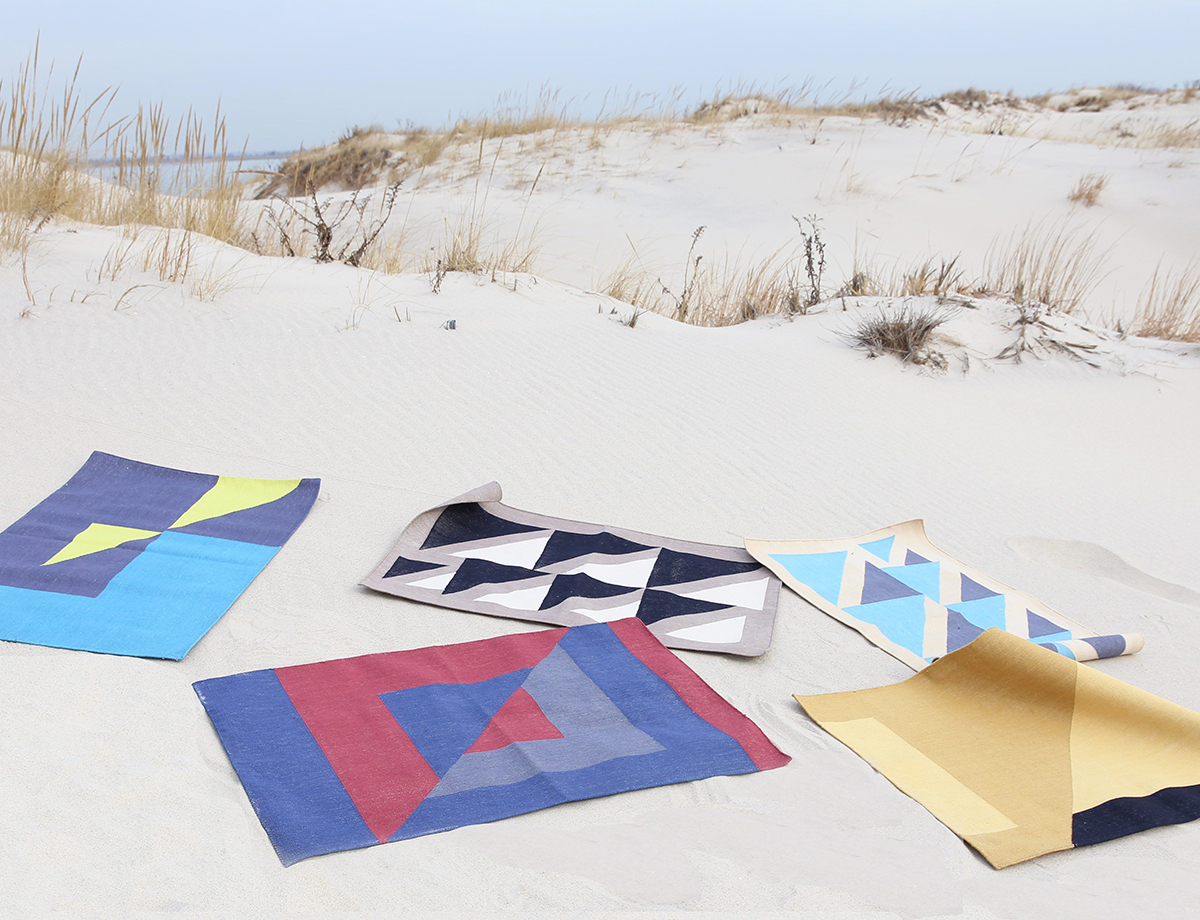
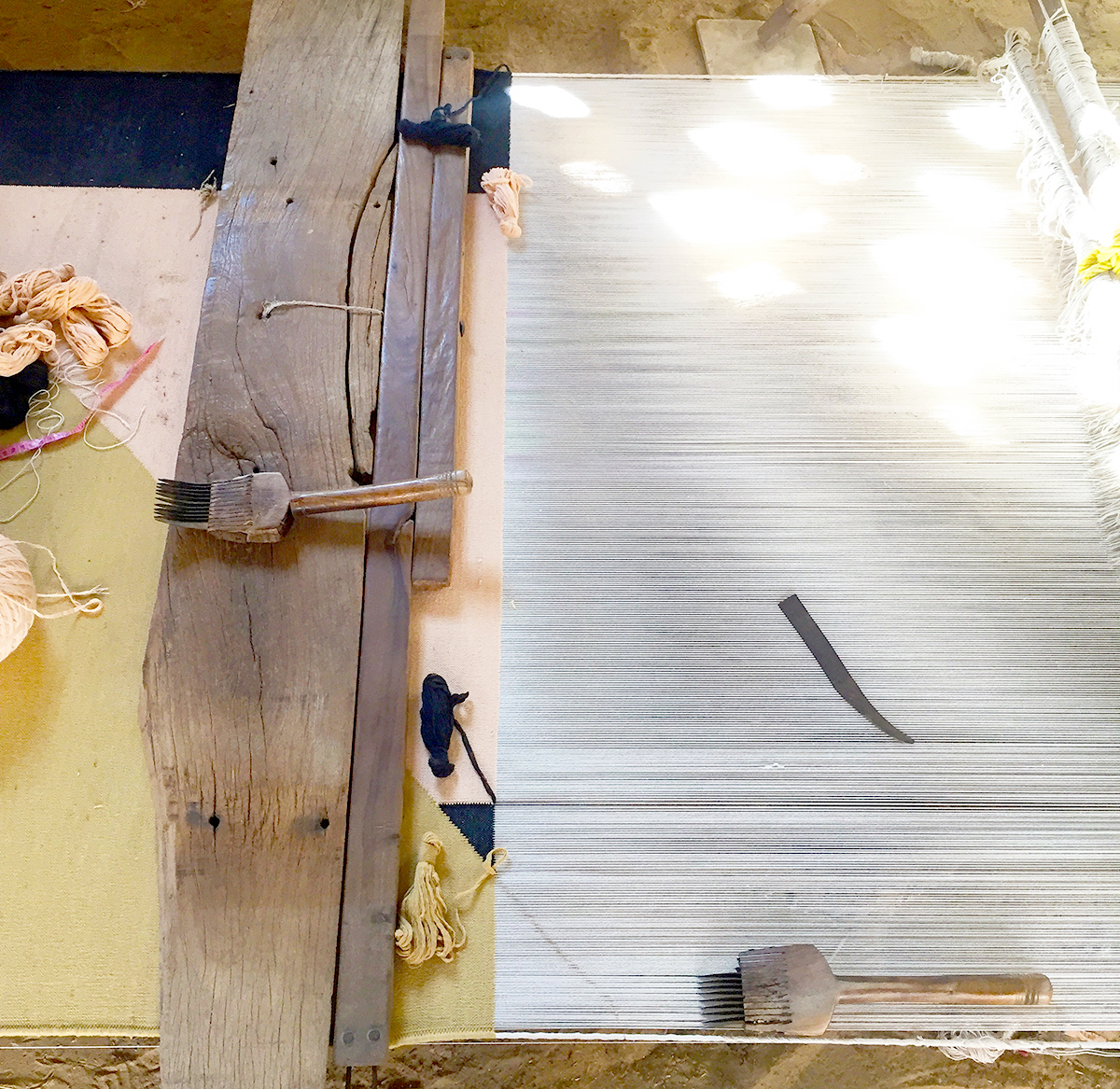 Tantuvi
Tantuvi
This sense of urgency that you describe isn’t always conducive to making the right decisions. For me there was a real depression that first set in during the lockdown, because we were in the middle of starting a new company in Thailand. But later I realized that this was an opportunity to think about how we do this right. If it’s something that really matters, it doesn’t have to happen today. That pressure is something we put on ourselves.
Peter: For me that pressure that you’re talking about, it’s that time base that is so strict, that demands from us all the time. And as much as I’ve been indoctrinated into it, that’s not part of my psyche. You know people used to joke around and say in a demeaning way, ‘There’s no hurry in Africa.’ They would say that in the worst possible way. But now all the sudden there’s no hurry anywhere. So maybe there’s something that you can learn from us, you know? It doesn’t make sense to me that a piece that you are going to buy, that is going to give you so much pleasure, should also be the cause of so much pain. How can the beauty transcend the physical object itself? You want the beauty to be all the way from the beginning to the end of the process. Respect means demanding from people to go beyond everything they know. It’s not easy because you’re asking them to totally change the way they think. But COVID has brought it about fast, and it’s given me a lot more self confidence to speak about these things.
In my mind, people like you guys who are operating in these in-between spaces and baking it into your process to challenge our accepted way of thinking, that’s what we need more of. It could be challenging your residents, or the designers you work with, or educating your clients — that’s how we can grow into a new future. So just to wrap up, what’s next, what are the future innovations or initiatives for Tantuvi, Mabeo, and Casa Wabi?
Arati: The communities that we work with are very proud, but during COVID some situations came to our attention that made us realize that they do need more support than we were giving them previously. So we recently came out with a village fund to create more profit-sharing and focus more on what they need in the villages. And although I don’t know when I’ll be able to travel to India next, I know that I want to start working with the artisans more hands-on in the sense of having them design their own work. I would love to be able to sell those pieces, and have it be marketed as their own ideas. They’ve already done a couple designs in the past for me just for fun, and they’re so charming. I’d love to have them take on this role as more of a designer and be able to express their ideas creatively besides just weaving. I think this would give them more respect, agency, and a deeper sense of pride; COVID has brought on a real fear of instability so many are worried about the future of weaving. This would also be a great way to contribute to the village fund, as we would pay the weavers for the rugs and give back all profits from the sales to the community to support their needs.
Peter: We always have new collections in the works, that’s what we’re constantly working on. The idea is to try and grow it to the point where there is independence. Ultimately what we’re looking for is equitable participation of everyone concerned. As you said, we need to be the transitional players. But ultimately I just want to live in a way where I don’t even have to think about these things. My idea is to grow it and make it strong structurally, so that we have more room to play. By playing I mean have the craftspeople take more of a creative and leadership role. And even redefining what it means to be a brand in our region. We’ve just moved out of the city to a rural area where we’ll have our new workshop, and maybe even have a small residency for the visiting designers. I think for all of us, we need to become as self-sufficient as possible.
Carla: For us, our next big step is to start a new carpentry program. We want the kids to start acknowledging wood and to respect it in a new way. For teenagers in the area it could be a hobby, or even create the possibility of starting a new career path. We also have plans to bring Japanese carpenters to come and work with the local carpenters in the area for a year, as well as to bring international designers to collaborate with them. But one of the things that COVID taught us here at Casa Wabi is the importance of having a hobby and a way to release your stress. So our next big step is to start with this new carpentry pavilion.
Well it sounds amazing and I hope to come visit someday!
Carla: Yes, I hope that the next time we all meet up it won’t be on Zoom, but will be in Casa Wabi having a nice glass of wine!
Arati: Hopefully we’ll be able to travel internationally again next year!
Peter: I just wanted to say that you all do amazing work, and it’s been a privilege to have this conversation.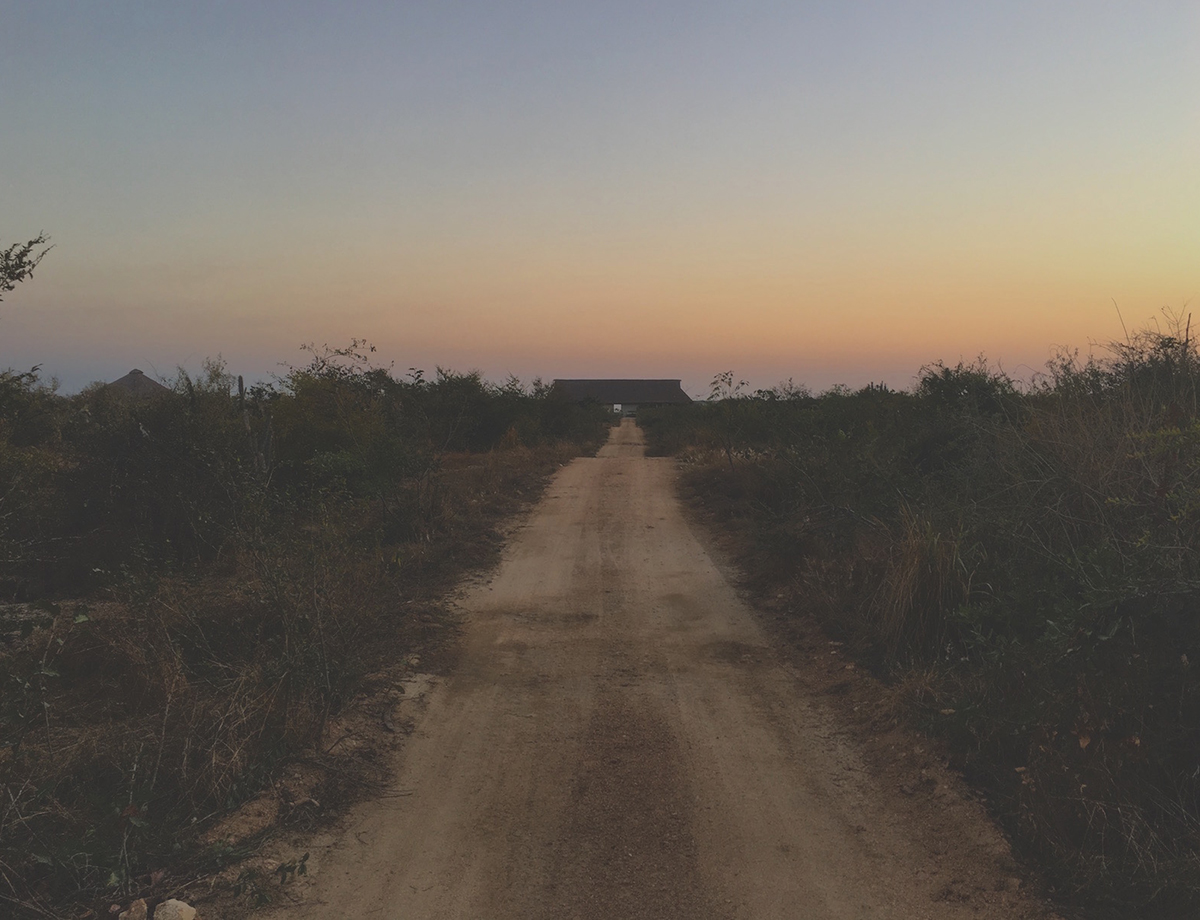 Casa Wabi
Casa Wabi
